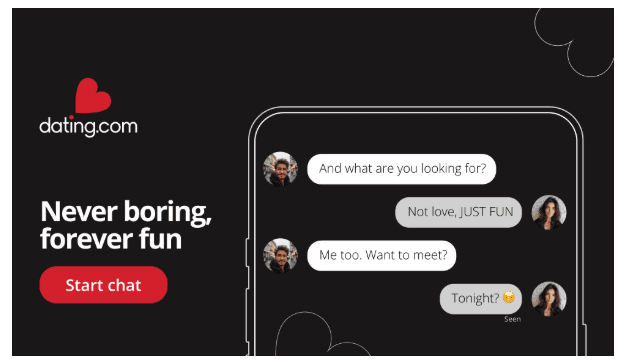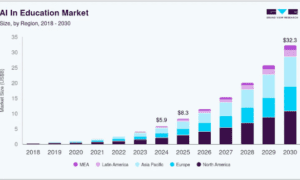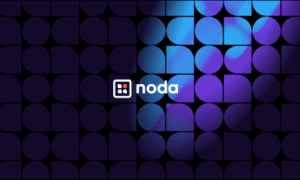Dating.com blends mood-smart algorithms with human warmth to help Gen Z and Millennials fight digital loneliness
Social feeds sparkle with color yet leave many twenty-something users feeling empty. Endless swiping multiplies matches without creating meaning, and ghosted threads can make a person wonder if anyone is actually listening. Into that gap steps Dating.com, a platform that its users to listen for tone, not just tap for looks. The goal is simple and ambitious at once: nudge young adults toward deeper talks while giving them control over cost, pace, and personal safety.
Early adopters like the approach because it respects their biggest pain point. A 2023 report from the Pew Research Center highlights this pain point, revealing that nearly half of online dating users found the experience to be overwhelming, with many describing it as more frustrating than hopeful. They wanted slower, more intentional space. Dating.com engineers study that fatigue curve in real time. It’s not really beneficial to quickly through dozens of profiles; it would help to occasionally pause the carousel and suggest a “coffee chat” instead. Think of this small pause like a friend tapping your shoulder, inviting your to breathe before the next move.
AI that understands feelings, not just filters
The company’s developers avoid a single “attraction score” and instead build what they call an emotional mesh. They feed the algorithm a mix of profile text, emoji choice, reply speed, and even punctuation quirks. The mesh learns that the person who types “lol” in lowercase about indie road-trip music will likely click with someone who shares off-beat humor and late-night playlists rather than a gym photo and a fast swipe. When new members land on the home screen after their Dating.com login, they do not see a neon list of strangers. They see three suggested conversations framed by shared topics, for example, urban gardening or nostalgic video games from childhood.
This focus resonates with people who grew up in group chats. They value authenticity but still enjoy tech. Online dating for Gen Z must therefore be equal parts smart and gentle. The match suggestions using artificial intelligence do most of the heavy lifting by cutting the noise. One college junior wrote in a set of public Dating.com reviews that the prompt about “favorite small joys” led to a voice note exchange that lasted two hours and felt “more real than any bar date last semester.”
How Dating.com lowers anxiety in the first five minutes
Dating.com eases early nerves with a straightforward profile feed, so newcomers can scroll at their own pace instead of making rapid-fire decisions. Interest tags appear beneath each bio, offering ready-made conversation starters that prevent the dreaded blank-message moment. The Let’s Mingle greeting tool sends one personalised hello to several compatible members, giving shy users an easy first step. Visible verification badges confirm real identities, adding immediate confidence on both sides of the chat.
Another perk appears after members verify their identity on the Dating.com official site. Twice a year, a short selfie plus ID check unlocks a trust badge. That badge triples the chance that a first voice clip turns into a video call, partly because both members know the platform is watching for fakes. A few newcomers complain about the waiting period, yet most say it is worth the time once they see how few scam attempts reach their inbox. One detailed post in the latest group of Dating.com reviews admitted the verification held up a chat for five hours but also noted zero spam had reached the reviewer since the badge appeared.
Micro-features that grow trust slowly
Not every user jumps into a call on day one. It’s quite normal to stick to text chats for the first few interactions. Users aren’t constantly pushed to “upgrade” their conversations, so it’s up to them to stick to a speed that works for them. Dating.com keeps first moves low-risk by letting members begin with the least expensive action (standard chat) before spending more credits on voice or video. Every profile also displays a badge earned through a selfie-and-ID check, so even a paid text feels safer because both sides know they’re talking to a verified person.
Before any interaction, be it chat, voice note, video call, or virtual gift, the site shows the exact credit cost, allowing users to weigh value against interest in real time. That upfront pricing, paired with visible verification, helps trust grow in measured steps rather than forcing daters into big commitments too soon.
What four sets of Dating.com reviews reveal
First, newcomers like the way the platform encourages icebreakers. According to feedback, users praise the prompt cards for sparking unusual chats like vintage sneakers or sustainable thrift shopping. Second, frequent users can appreciate the clear cost information that’s available before chats begin. This transparency keeps budgets sane, an important issue for students tracking subscription fees.
A lot of Dating.com reviews highlight the sense of calm that follows when you’re able to engage people on your own terms. For example, Rimon says “I’m an introvert who loves spending time with people.” Actually, if you review Dating.com as a whole, you’ll find that a lot of people share this sentiment. We’re well into the digital age, and communication has adapted as well.
The science of loneliness and why AI can help
Psychologists define loneliness as the gap between desired and achieved social connection. Gen Z reports both high online interaction and high loneliness, meaning quantity is not solving quality. AI can assist by reducing decision fatigue and offering smarter matches so each interaction carries more potential. When the algorithm recommends fewer people but with better context, daters spend more time per message, building micro-trust before they invest credits. That slower pace aligns with the emotional safety that younger users rank above raw profile exposure.
How to start in three easy moves
First, write one sentence about something oddly specific you love, like late-night astronomy podcasts. Second, after completing your next Dating.com login, read the three conversation suggestions and choose the one that mentions your detail. Finally, ask a question connected to that topic and stop at two lines. Let the match respond. This tiny workflow leverages the platform’s AI without overwhelming your schedule or your credit balance.
Final thought
Loneliness may be a modern epidemic, but the cure might also live in the device already in your pocket. By focusing on emotional tone, shared micro-interests, and steady safety cues, Dating.com shows that artificial intelligence can bring warmth instead of noise. For Gen Z and Millennial daters who crave depth, the next thoughtful prompt could be the beginning of a friendship that beats the scrolling blues.
Read More From Techbullion



































